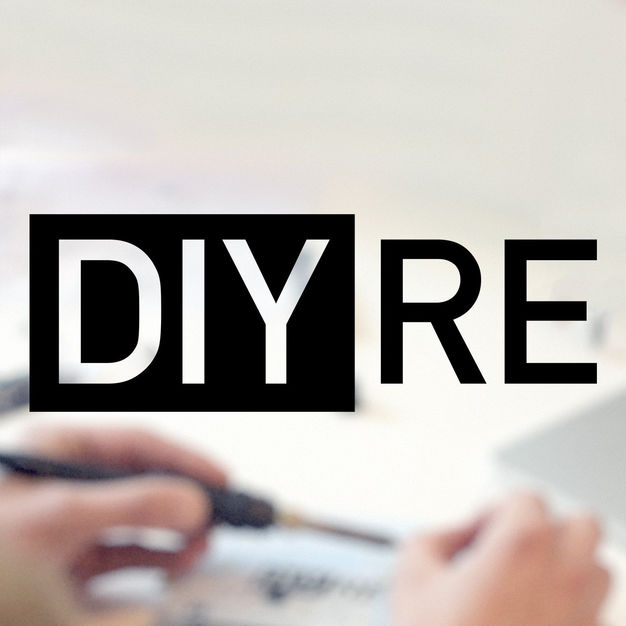
DIY Recording Equipment Podcast
Peterson Goodwyn
Discussions of how to build your own gear for the recording studio and interviews with audio electronics experts.
- Designing Legendary Gear with Paul Wolff
Paul Wolff has designed more legendary pieces of gear than most of us have used. In his years with API alone, Paul designed the 550B EQ, 512 and 3124 mic preamps, Legacy console, and 2500 compressor. He was recently honored by NAMM TEC hall of fame for inventing the Lunchbox and 500-series format, which he helped turned into a cottage industry.
I was honored to have Paul on the podcast to discuss console design and how he's seen the industry change in the last 40 years.
Just a few of the things we discussed:
- The origins of the 500-series
- How Steve Perry became the first customer of the Lunchbox
- The uphill battle to make gear that’s authentic to the API sound
- What happened in 1978 to change the sound of most audio equipment
- Paul's opinion that cloners "should be burned to death”
Download the mp3 or subscribe via iTunes
Some Notes on API Jargon
As much as I try to keep our podcasts fairly jargon-free, I was guilty of using a lot of API model numbers without explanation this episode. These are:
- 550A: Late 60's, 3-band EQ
- 2520: The discrete operational amplifier (DOA, or "opamp") that's at the heart of most API designs
- 2488: Early 70's console
- 512: 500-series mic preamp designed by Paul
- 312: 60's mic preamp
- 3124: A 4-channel 312 designed by Paul
- 2503: The output transformer in most API gear
- 2500: Bus compressor designed by Paul
22 June 2017, 8:42 pm - Analog Synth DIY with Abby Echiverri
I've often fantasized about building a huge analog synth. But besides the obstacles of cost and not having a spare room in my house for it, I've always found the DIY synth world to be a bit intimidating.
In this podcast, synth wizard Abby Echiverri walks me through the basics, such as:
Is it feasible to build your own synth?
How much should I budget?
What are the basic modules I need to build?
Abby is a composer, DJ, DIYer, and audio gear designer. I caught up with her when she was on the road as the synth/keyboard tech for Soulwax.
Download the mp3 or subscribe via iTunes
27 April 2017, 8:21 pm - Chassis Design with Jon Erickson
We audio nerds love to talk about particular parts and circuitry—transformers, op-amps, discrete vs integrated, passive vs active, etc—but we rarely discuss the biggest part and the one we actually interface with the most: the chassis.
In this episode of our resurrected podcast, I talk to Jon Erickson about the ins and outs of chassis design and manufacturing.
Jon Erickson has been involved with some of the most delicious-looking audio gear on the market: the A-Designs Pacifica preamp, JHS Pedals' line of 500-series modules, and his flagship Tonecraft 363 DI/preamp.
Download the mp3 or subscribe via iTunes
16 February 2017, 5:35 pm - "Explain Like I'm 5": Why Is Pro Audio Gear So Expensive?
Sticker shock is a common malady in the recording world. It takes a lot of money to outfit and maintain a studio. But why?
What are the factors that drive the price of professional recording gear?
Why does gear cost so much more than the sum of its components?
Are the prices justified, or is someone getting ripped off?
In this month's podcast, Peterson and Chris discuss what goes into the cost of a piece of gear, and how you can short-circuit some of these costs by doing it yourself.
Download the mp3 or subscribe via iTunes
27 February 2015, 10:17 pm - "Explain Like I'm 5": Filters
How do filters work?
As audio engineers, we use filters every day. We're all intimately familiar with high-pass, low-pass, band-pass, shelf, etc. filters. But how do they actually work in analog gear?
The basic operating principles of analog filters are actually very simple. In this quick (10 minute) podcast, Peterson and Chris explain the very basics of high-pass and low-pass filters so that any 5-year-old could understand.
Download the mp3 or subscribe via iTunes
View the circuits we discussed in the podcast on Upverter:29 January 2015, 7:32 pm - “Explain Like I’m 5″: Audio Levels
What's the difference between "pro" and "consumer" line levels?
Is it ok to plug an instrument into a line level input?
What's the difference between peak and RMS levels?
In the long-awaited return of our "Explain Like I'm 5" podcast series, Peterson and new DIYRE team member, Chris, explain the basics of audio levels.
Download the mp3 or subscribe via iTunes
Topics discussed:- Can you damage equipment by plugging the wrong thing in?
- In analog audio Volume = Voltage
- The difference between peak and RMS volume
- RMS is a way of measuring AC as if it were DC
- The most common levels you'll encounter in the studio:
- +4dBu, pro line level (1.22V)
- -10dBV, consumer line level (.316V)
- Mic level
- Instrument level
- Tangent: why are microphone output levels so low?
12 December 2014, 1:22 am - Talking Tubes with DW FearnDW Fearn knows tubes. Since he rediscovered the sound of tubes in 1991, DW (Doug) has crafted a legendary line of all-tube, all-red-front-paneled recording gear. In April I had the pleasure of visiting Doug at his home and workshop outside Philadelphia. Doug and I sat down on either side of a ribbon microphone and had a great conversation about tubes, electronics, and sound. During our conversation Doug tells the story of how he returned to tubes after decades of operating an all sold-state studio, and outlines the theory behind why tubes and transistors sound different in a clear and straightforward way.

Download the mp3 or listen on iTunes .
Subscribe to the DIYRE podcast
Topics discussed:
- How Doug pieced together his first console from standalone amplifiers
- What happened when he replaced that tube gear with a solid-state console
- "We couldn't admit that it didn't sound good, so we just got used to it."
- How a demo tape from college in 1966 led him back to building tube amps
- "We didn't listen to recorded music in my household... live music was what I was exposed to. So when the time came to build a mic preamp, that's the sound I had in my mind."
- Tubes vs transistors: why it's all about headroom
- Even vs odd harmonics and how they relate to tubes vs transistors
- "The less you torture it, the better it's going to sound. So you keep the signal path as simple as possible."
- What Doug's new product design process looks like
- The one equalizer that knocked DW Fearn out
- DW Fearn refuses to wrestle a piece of gear into existence
26 August 2014, 4:07 pm - "Explain Like I'm 5": Impedance
When I sent out the newsletter announcing the last "Explain Like I'm 5 Podcast," I asked which audio topics you wanted to hear explained to a 5-year-old. As as result I now have a list of over 25 topics for future shows! But the response I got the most was "impedance."
One reader even taunted me: "Haha, explain impedance like I'm five..good luck with that ;)" Challenge accepted, buddy!
Impedance is one of those audio concepts that comes up at almost every recording session or live sound gig, even if you're not aware of it. Grasping the basics of input and output impedance can make you aware of potential problems before they happen, and help you problem solve more quickly and confidently. And the truth is that the fundamentals of impedance are simple enough that you can learn them from a 15-minute podcast.
In today's ELI5 podcast, I begin with a discussion of acoustics before moving to electronics to show you that you already know more about impedance than you probably think. I go on to cover exactly what input/output impedance specs mean, illustrate the concept of impedance with examples from the studio, and explain what impedance mis-matches can do to your sound.
Download the mp3 or subscribe via iTunes.
Subscribe to the DIYRE podcast
Do you understand impedance now? How easy was the podcast to understand? Is there any other topic you'd like to hear explained as if to a 5-year-old? I welcome your feedback in the comments.
18 July 2013, 8:20 pm - "Explain Like I'm 5": Balanced vs. Unbalanced Connections
This podcast marks the first of a new series in which I attempt to explain complex audio subjects so that a 5-year-old could understand them.
In this first "Explain Like I'm 5" podcast, I tackle the important subject of balancing. What is the difference between balanced and unbalanced connections? How does balancing work? Why do we need balanced connections?
In less than 15 minutes, I answer these questions the way I wish someone had for me: assuming no electronics knowledge, sticking to the basics, and using only terminology that a musician would understand.
Download the mp3 or subscribe via iTunes
In order, I discuss:
- What are balanced and unbalanced connections?
- How can I identify the difference?
- Why are there these two types of connections in the studio?
- How does balancing reduce noise?
- What is Common Mode Rejection Ratio (CMRR)?
- If balanced connections are so great, why isn't everything balanced?
11 July 2013, 4:30 pm - Mic Preamps and Surface-Mount Parts with Expat Audio
In this month's DIY podcast, I talk to Dafydd Roche of Expat Audio about their new Eden Mic Preamp.
Download the mp3 or listen on iTunes .
Subscribe to the DIYRE podcast
Dafydd and I get into some good stuff about mic preamp and general audio design, including:
- The difference between surface mount (SMD/SMT) and through hole components in terms of sound and performance.
- Are SMDs good for audio? Should we audio folks resist industry's march toward all surface-mount parts?
- The concept of "parasitics" in audio electronics design and when their effects can be critical.
- Dafydd gives us a guided tour of the Eden circuit from the input to output jacks--a great way to get a grasp on the basics of mic preamp design.
14 March 2013, 6:15 pm - "Everything You Always Wanted to Know About Audio Electronics..." Part 2
Our resident electronics expert, Duncan Gray, is back to answer your audio electronics questions! Duncan and I recorded two hours of answers last week to the questions you asked in the original "Everything You Always Wanted to Know About Audio Electronics..." post.
So to spare you the tedium of digging through 120 minutes of audio to find the answer to your questions, we've split our conversation up into smaller, more easily digestible podcast. Stick with us until the 33 minute mark, where we answer my favorite question so far that gets to the heart of the amazing relationship between audio and analog electronics.
Download the mp3 or listen on iTunes .
Subscribe to the DIYRE podcast
In today's 45 minute segment we cover:
- "What troubleshooting process do you recommend when your PCB-based project isn’t working?"
- "What audible impact does input/output impedance have on the connected equipment. The effect it has upon the amount of voltage transferred is clear, however a more comprehensive explanation on how impedance can alter the sound of interfaced equipment would be hugely appreciated."
- When impedance can be negligible and when it can have a huge impact on sound.
- "Capacitors have been causing me headaches for a while now. In pedals for guitars, tone circuits for guitars, audio paths for pre’s, and so on, it always seems like folks go the extra mile to use film caps. Why? Isn’t a cap a cap a cap? Putting aside electrolytics for the moment, and voltage limits, why would anyone use one style (ceramic, mica, polyester, polypropylene) over another for audio purposes?"
- Why Duncan would avoid ceramic caps in the signal path "like the plague."
- Duncan ranks types of film capacitors in terms of their suitability to audio.
- "What parts are most/least to susceptible to heat damage from soldering?
- Using a hemostat to protect your components while soldering.
-
Straight 5" Hemostat
(Amazon affiliate link that benefits DIYRE.)
- "What do you think the top five safety rules are when building audio gear , whether tube or solid-state?"
- Which voltages are dangerous? Which are fatal?
- How to protect yourself from the circuit, and how to protect the circuit from you.
- "Can you clarify and explain the correlation between audio frequencies & amplitude, and their electrical counterparts current, voltage, and resistance… In other words what does a change in resistance, current, or voltage do to sound waves."
- The "magic of math": how sound and analog electronics are deeply analogous.
- Sound and AC voltage: same concepts, different medium
- Using the concept of "silence" to better understand electrical "ground."
31 December 2012, 5:42 pm - More Episodes? Get the App
Your feedback is valuable to us. Should you encounter any bugs, glitches, lack of functionality or other problems, please email us on [email protected] or join Moon.FM Telegram Group where you can talk directly to the dev team who are happy to answer any queries.
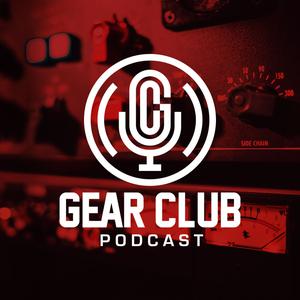 Gear Club Podcast
Gear Club Podcast
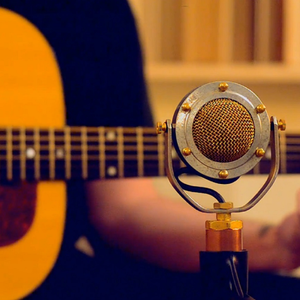 Recording Lounge
Recording Lounge
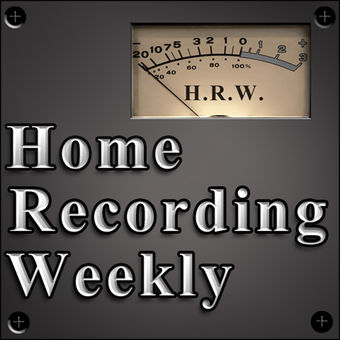 Home Recording Weekly Podcast
Home Recording Weekly Podcast
 Home Recording Tips for Pro Audio on a Budget | Home Music Studio 1 Podcast
Home Recording Tips for Pro Audio on a Budget | Home Music Studio 1 Podcast
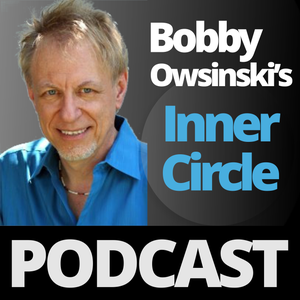 Bobby Owsinski's Inner Circle Podcast
Bobby Owsinski's Inner Circle Podcast
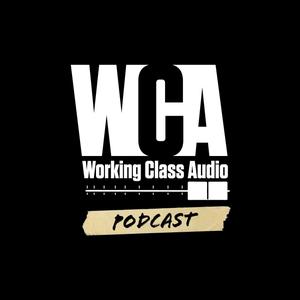 Working Class Audio
Working Class Audio